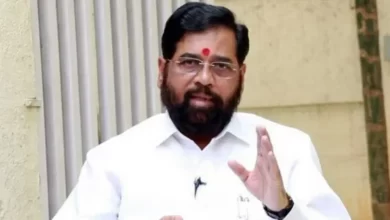health sector challenges

[ad_1]
Jayantilal Bhandari
There is acute shortage of doctors, health facilities, medicines, skilled and trained nursing staff and other facilities in government hospitals. Due to private hospitals, people from the upper and richer sections of the society get quality health care, but this situation remains very worrying in respect of the poor and weaker sections of the society.
The challenges of the health sector have increased due to the corona pandemic. At present, the infection rate has exceeded one percent in eight states of the country, Himachal Pradesh, Jammu and Kashmir, Lakshadweep, Tamil Nadu, Karnataka, Mizoram, Puducherry and Kerala. This rate is also called the R-number (reproduction number). This shows how contagious the epidemic is. A number below one or one indicates that the virus is spreading slowly, while any number above one indicates rapid spread. In India, this rate was 1.2 in the first week of August, which is at par with the US, Canada and Australia. The Health Ministry has warned that the second wave of the epidemic in the country is not over yet and the possibility of a third wave also remains.
There is no doubt that the health crisis created by the pandemic has turned into a human, social and economic crisis for the country. Due to this crisis, the rapidly increasing per capita income and the growth rate of the country have also decreased. In such a situation, huge investments are necessary for a very strong health infrastructure at this time. In the midst of the health challenges posed by the pandemic, it may be time to make strategic efforts to mobilize maximum financial resources, including through foreign exchange funds, to strengthen health sector infrastructure and services.
There is no doubt that the lack of human resources, infrastructure and health services related to the health sector is no less worrisome. Recently, the government told in the Lok Sabha that there is one allopathic doctor for eight hundred and fifty-four people and one nurse for five hundred and sixty nine people in the country. There are twelve lakh sixty eight thousand allopathic and five lakh sixty five thousand Ayurvedic doctors in the country. The number of nursing staff is around thirty two lakhs. Oxfam India report shows that India ranks one hundred and fifty-fifth among one hundred sixty-seven countries in terms of hospital beds availability. There are about five beds for a population of ten thousand in the country.
Due to the increasing health challenges in the country, not only the poor class, but the middle class is also facing great difficulties. Recently, during the hearing of a PIL, the Supreme Court had also said that people are facing difficulties due to lack of proper management of health services during the Corona period. Small health centers do not have adequate treatment facilities. Seventy percent of the health facilities of the country are in private hands. Private health centers are exploiting patients. On this, the Supreme Court has issued a notice to the Center and all the states and has also sought a response. The reality is that due to paucity of financial resources in India, the health infrastructure and health facilities have never been given due attention. For the first time, the 15th Finance Commission constituted a high-level committee on health. This committee has talked about increasing the government expenditure on the health sector to 2.5 percent of the gross domestic product (GDP).
However, it cannot be denied that despite the lack of financial resources, there have been many fundamental reforms in the health sector of the country. In the last few years, effective steps have also been taken to give an umbrella of health to the common man. The median age in India was 59.6 years in 1990, which has increased to 70.8 years in 2019. The National Health Mission (NHM) has played a key role in addressing inequality in access to pre-treatment and post-treatment care to the poor.
It is noteworthy that to deal with the corona epidemic, the government has taken many effective steps to strengthen the health sector under the self-reliant India campaign. In the budget for the financial year 2021-22, an expenditure of Rs 2,23,846 crore has been ensured for health and well-being, as compared to Rs 94,452 crore in 2020-21. It is also worth mentioning that the Finance Minister has announced a loan guarantee scheme of Rs 50,000 crore for expansion of health infrastructure in small and medium towns. Along with this, an additional allocation of twenty three thousand crores has been made to develop basic facilities related to child and infant care.
Vaccination work started in the country in January this year and by July, more than forty-four crore people of the country had been given vaccines. But right now a lot of resources and efforts are needed to strengthen the health infrastructure of the country and immunize all the people. There is acute shortage of doctors, health facilities, medicines, skilled and trained nursing staff and other facilities in government hospitals. Due to private hospitals, people from the upper and richer sections of the society get quality health care, but this situation remains very worrying in respect of the poor and weaker sections of the society. Expenditure on health by the common man has increased rapidly due to costly health services, due to which expenditure on health has started to be considered as one of the major reasons for increasing poverty.
Till two-and-a-half decades ago, in most of the poor and developing countries of the world, high government spending on health was considered unsuitable and wasteful expenditure. But it is now recognized that government spending on health is not an expenditure, but a development-oriented and profitable investment related to human happiness. Nobel laureate Angus Deaton in his book Health, Wealth and Inequality has said that epidemics and communicable diseases are the greatest enemies of economic development. It is also believed that investment made on health gives manifold returns and increases productivity. Various economic and social research studies have found that the development of health infrastructure and expansion of quality health services has been one of the main reasons behind the rapid increase in life expectancy and economic growth in European countries over the past decades.
In such a situation, in our country too, amidst the challenges of the corona epidemic, it is clearly visible that effective investment is necessary to make the public health system especially the primary health care centers and district hospitals useful and strong. The existing hospital buildings will have to be furnished with quality. New primary health centers will have to be established in small villages and rural areas. The focus will have to be on the best supply chain of oxygen, essential medicines and life-use health supplies in hospitals. Emphasis has to be laid on continuous training of health workers in primary and district hospitals. Maximum focus has to be given to upgrade the testing laboratories and quality improvement of health equipments. This is the time for extraordinary investment in the health sector to save the country from future health crises, to raise the productivity and standard of living of the common man. Especially when the country’s foreign exchange reserves have reached more than six hundred and twelve billion dollars, then it would be appropriate to strategically use a suitable part of the country’s foreign exchange reserves for quality health services and strengthening the health infrastructure.
most read
.
[ad_2]






